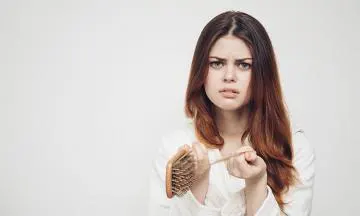

5 ways to prevent Traction Alopecia
Are you suffering from traction alopecia? You probably do not know what this is unless a medical professional or hairstylist has told you that you have it.
Traction alopecia refers to a particular type of hair loss that arises when the hair roots are gently but persistently pulled throughout the day, usually as a result of particular hairstyling habits such as wearing the hair in tight buns, knots or ponytails and the use of straighteners.
The persistent pulling that occurs with these hairstyles may go unnoticed until prolonged tension on the hair roots starts to damage the hair follicles and alopecia begins to develop. Nowadays, with increasing numbers of women opting for certain scalp-pulling hairstyles such as hair extensions, braids, and clip-ins, healthcare experts are starting to see increasing numbers of women develop traction alopecia.
Different hairstyles produce different stresses and effects on the hair. Regular wearing of a ponytail can lead to hair loss that involves the frontal and parietal scalp areas. Braiding can lead to hair loss in the marginal or central scalp regions, with a widening of the partings between cornrows. Wearing the hair twisted in a bun on the top of the head can lead to a ring-shaped alopecia in the central area of the scalp. Tightly applied rollers may cause irregular bald patches and too much brushing can produce wide-spread hair loss.
Many women are often reluctant to change how they style their hair, but the good news is that traction alopecia is entirely preventable if changes are made. Some of the ways to prevent this problem are described below:
5 ways to prevent traction alopecia
1. Avoid Tight Hairstyles
Hairstyles such as cornrows, braids, and ponytails should be avoided as all these results in persistent tension being applied to the hair. These styles commonly cause damage to the hair that results in alopecia. Wearing the hair in a less tight style can make a big difference. Do not use rubber bands and elastic ponytail holders. Don’t sleep in rollers, wrap your hair instead.
2. Avoid Extensions
The excess weight carried by hair extensions can also cause constant tension to the hair, persistently pulling on a woman’s own hair and eventually damaging the real hair fibers and follicles. The glue that is used to attach the extensions can also cause significant damage to the original hair. Even if you want to wear them, take a break between each usage.
3. Alter Styling Technique
Using heat-based equipment such as straighteners or curlers to style the hair subjects the hair to extremely high temperatures, which can cause significant damage to the hair, particularly if this is done regularly.
4. Avoid Dying Hair Regularly
Frequent coloring can also damage the hair as chemicals and bleaches in the dyes remove moisture from it, making it dry, brittle, and more susceptible to snapping.
5. Try Going Natural
If you notice patchy hair loss around the top or sides of your scalp and think it may be due to Traction Alopecia, the best thing to do is immediately change your hairstyle to one which is looser and more natural, to prevent further damage and increase chances of repair and restoration of your hair by itself.
https://www.drbatras.ae/factors-responsible-for-causing-alopecia-areata - Also Read
https://www.drbatras.ae/alopecia-and-homeopathy - Also Read
https://www.drbatras.ae/homeopathy-a-natural-cure-for-alopecia-areata - Also Read
https://www.drbatras.ae/alopecia-areata-treatment-in-homeopathy - Also Read
https://www.drbatras.ae/alopecia-areata-causes-how-to-treat-it-with-homeopathy - Also Read



